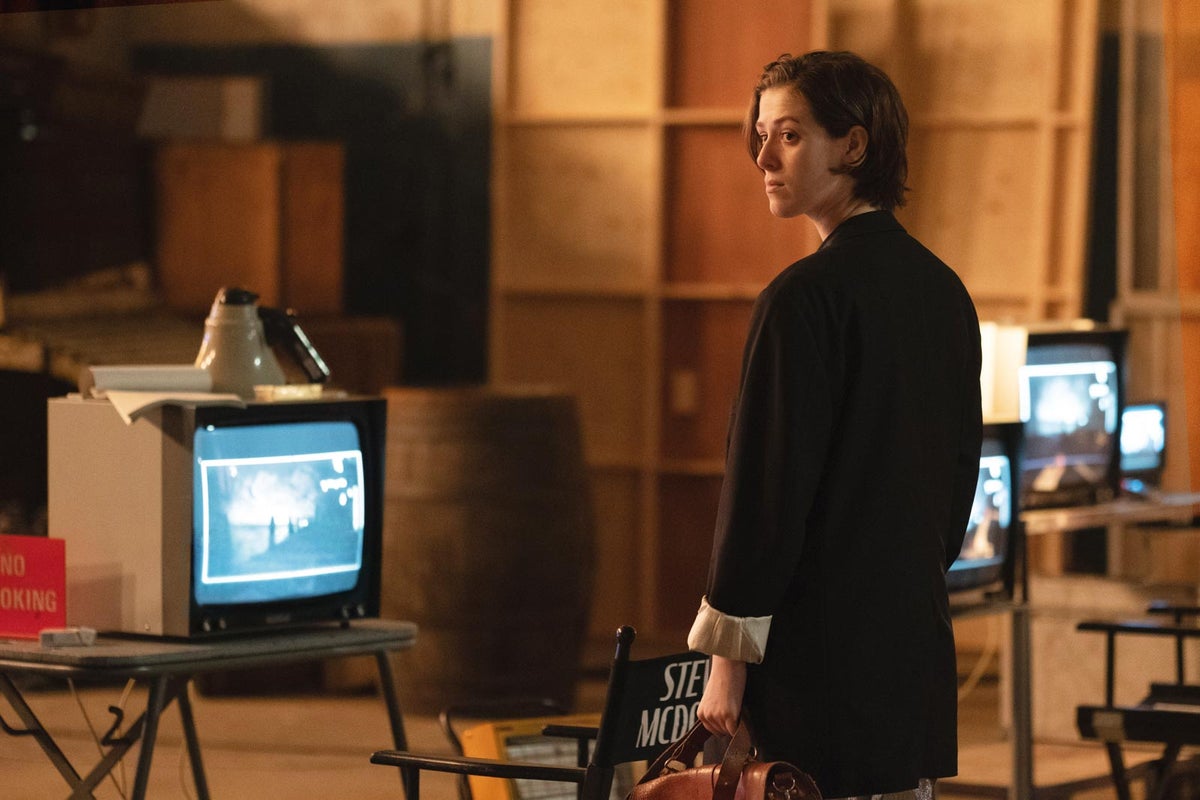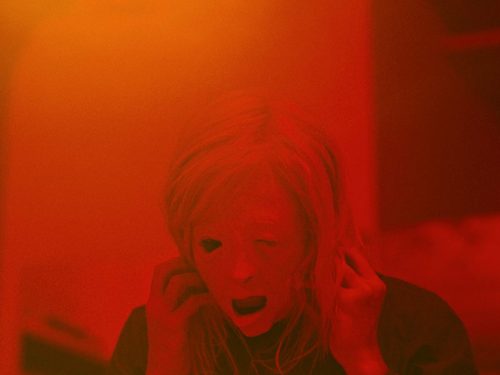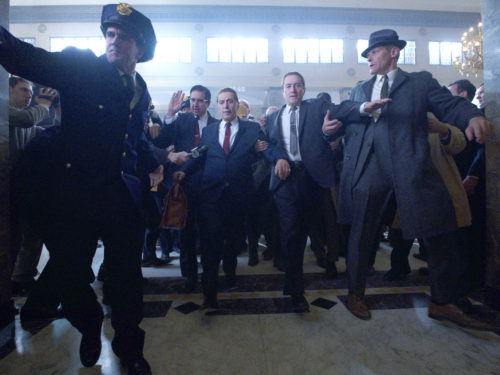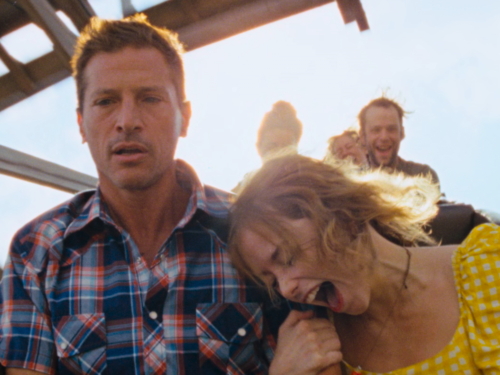In both Souvenir films, Joanna Hogg continually avoids the temptation to be obvious; In The Worst Person in the World, Joachim Trier makes the obvious choice whenever he can
Among 2021’s most notable festival hits were two films following artistic women named Julie in the years surrounding their 30th birthdays. Major plot concerns include the protagonists’ fraught relationships with older men. Both films are the fifth features from their respective directors and both directors studied at the UK’s National Film and Television School. One film, Joachim Trier’s The Worst Person in the World, has become a sensation, earning Oscar nominations and critics awards in addition to considerable online buzz. The other, Joanna Hogg’s The Souvenir Part II, garnered more muted acclaim before disappearing altogether, no awards or box office success to show for itself. It’s unfortunate, but utterly predictable and evidence of more than just NEON’s recent dominance of A24. Where Trier and co-screenwriter Eskil Vogt insist on their film’s contemporary relevance with crass jokes and repeatedly shout their emotional notes, Hogg favors remarkably specific material and tends to avoid all but the most subtle inflections. Hogg says she’s used her filmmaking career to do everything she wasn’t allowed to do on television; Trier’s filmmaking career all but demands a streaming series.
The Souvenir films focus on Julie Harte (Honor Swinton Byrne), an English film student whose life experiences, musical tastes, clothes, and apartment all largely coincide with those of her director around the time the film takes place. (From this point, I’ll refer to Hogg’s protagonist by her surname, Harte, to hopefully keep things as clear as possible.) Part I mostly deals with Harte’s academic, artistic, and romantic struggles. Early on, she meets Anthony (Tom Burke), a mysterious, dandyish older man who claims to work for the Foreign Office. They start a relationship that’s marked by standoffishness and superiority from the start and becomes all the worse when Harte learns that Anthony is a heroin addict. Anthony’s drug use repeatedly causes rifts in the relationship, though Hogg cannily avoids showing us most of the big fights. Harte and Anthony are briefly reconciled before he relapses and dies of an overdose. Throughout the second film, Harte attempts to piece together Anthony’s last day and professional life while returning to her studies to create a “memorial.” Harte’s thesis film fictionalizes many of the events of Part I. Changes in Harte’s attitude and appearance eventually make it clear that we’re not watching Harte direct her thesis so much as we’re watching Hogg direct The Souvenir Part I.
Split into a prologue, 12 chapters, and an epilogue, The Worst Person in the World follows Renata Reinsve’s Julie for four years, from the time she drops out of medical school to a seeming moment of personal serenity and professional stability. Trier is clearly aiming for a novelistic structure. He achieves something more like an indifferently plotted miniseries. The Worst Person in the World lurches through its 14 segments as if this number were assigned ahead of time. The prologue introduces Julie, the brisk pace the film will sustain for most of its runtime, and the thin characterization Trier will favor. Her switch from studying medicine to studying psychology to studying photography leads her to meet Aksel (Anders Danielsen Lie), a noted graphic novelist who’s more than a decade her senior. Much of the relationship drama that follows comes down to the question of children; Aksel wants them, Julie’s not sold. “You seem to be waiting for something, I’m not sure what,” Aksel remarks. He is explicitly referring to Julie’s indecision on whether or not to have a kid. If the line is meant to speak to the film’s generational themes and explain its lead character’s searching, then it reveals The Worst Person in the World as a remarkably regressive film, as prescriptive and patronizing as a conduct novel. When Eivind (Herbert Nordrum), a barista around Julie’s age, arrives, the film takes the first of many detours into romcom magical realism. The two share a night of insufferably twee near-infidelity during Part 2 (Cheating) after Eivind overhears Julie sparring with a new mother at a wedding reception she’s crashed. They reunite by happenstance in Part 5 (Bad Timing). Before Julie leaves Aksel for Eivind, she suddenly stops time and runs through Oslo’s streets to find her new partner so they can share a day alone together. The sequence convinces her she’s found a better match in Eivind and left me longing for The Souvenir’s jaundiced and lightly surreal take on sex and romance, as evidenced in sequences like Harte’s bizarre, near-wordless encounter with Jim (Charlie Heaton).
Obviously Hogg had the benefit of biographical experience to inform her characterizations and performances. At school, Harte often struggles to make up her mind (a trait she shares with Trier’s Julie) and faces blatant condescension. Hogg leaves any age or gender discrimination from Harte’s all-male professors implicit. Class resentment, however, rarely goes unspoken. When Harte neglects to set a budget, one professor quips, “I guess you don’t have to worry about budgets in Knightsbridge.” Hogg’s choice to include these conversations shows the same clear-eyed perspective on privilege that defines her previous films. It’s a bold move for Hogg to have her protagonist face ostracization for the exact qualities viewers are most likely to disdain in her. Harte’s not just rich, but a landlord! We’re meant to wince with a mix of recognition, sympathy, and a little frustration when she describes “leaving her privileged bubble” as a vague artistic goal. As the subject matter for Harte’s thesis film shifts inward, away from working class Sunderland residents, that line comes to resonate with echoes of self critique. At the same time, Hogg seems to use Harte’s slow process of artistic actualization to suggest they both made the right choice.
Fans of The Worst Person in the World credit Trier with elevating the travails of the everyday person, turning situations they can relate to (or, really, glamorized versions of those situations) into the stuff of swooning cinematic art. Such critics could be letting that sense of near-familiarity cloud their judgment or, more charitably, they’re confusing a single charming performance for a great film. The New Yorker’s Richard Brody, among the very few critics to dismiss The Worst Person in the World1, agrees in his astute, mostly negative review. That the film works at all is a testament to Renata Reinsve’s ability to make something of nothing. He argues that Reinsve gives an immense performance, “seem[ing] to expand the film beyond its narrow scope” in service of minute characterization. “I feel I’ve been a supporting character in my own life,” Julie says, in another line you’ll read in almost every review. It seems to promise a realization and a new role that never comes. For all her screen time, she may as well play a supporting role in this period of her life, too. The dimensions and details of Julie’s personality, beyond which of the two male leads she’s committed to, remain a mystery despite 14 chapters. This winds up seeming less like deliberate ambiguity and more like an abdication of duty on the part of the filmmaker. The line and its implications don’t do Trier’s film any favors by calling to mind Harte’s narrative, which culminates with directing and starring in versions of her own life story. When Trier offers rare snatches of psychological shading, it’s always through the hackiest devices imaginable: a recurring omniscient voice over, a drug trip through some familial tension, a look into Julie’s lineage that’d make Mike Mills roll his eyes. It’s all enough to make you wish he’d left his leading lady a complete cipher. As Brody writes, “Trier observes [Julie] with a superficial fascination, even an infatuation with his own dramatic creation.” In creating an everywoman and attempting to chart her experience of growing more specific, Trier only succeeds in reducing Julie to nothing at all and calling to mind the emptiness of the whole film.
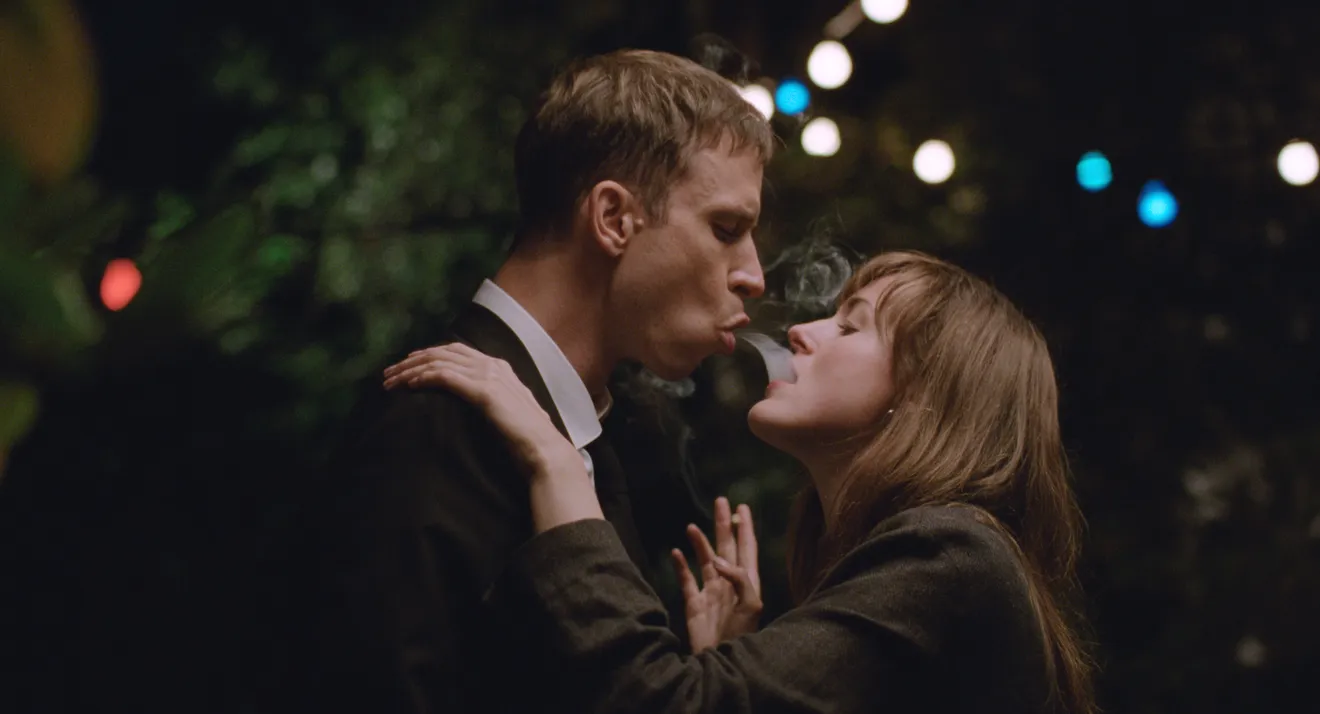
Hogg’s sense of familiarity, it should be noted, results in more than just a fully realized protagonist. Hogg looks back on her past through a lens broad enough to democratize and improve British cinema. Patrick, Richard Ayoade’s scene-stealing auteur, has no real-world analogue. In a film constructed of so much authentic, autobiographical detail (from the plotting down to the costumes), an invention like Patrick sticks out. Though Harte’s peers disagree on whether Patrick’s work is any good, it’s clear how she and Hogg feel about his philosophy on filmmaking. He seems to present a challenge and an example for Harte, an embodiment of the ups and downs an uncompromising career promises. On the set of his musical he complains about the miserabilist aesthetic of British film and, later, emphatically alludes to the fundamental difference between film and television. “It’s cinema,” he shouts, “not something you watch midweek with your uncle.” Best of all, he’s yelling at Chris Dickens, Ayoade’s real-life editor, throughout the second tirade. Patrick’s every line in Part II sounds like a dig at inferior directors, especially the question he asks Harte during their last encounter: “Did you avoid the temptation to be obvious?”
Related: Gauntlets Of Self-Discovery: Richard Ayoade’s Submarine (2010) And The Double (2013)
Trier is far less imaginative than Hogg in creating a cinematic Oslo and fictional Julie. Ultimately, his character’s artistic (and professional, and emotional, etc.) life goes unexplored, as do the various social spheres in which she operates. Julie aspires to a career in the arts and all we ever learn about her tastes is that she might need more than the one bookshelf Aksel allots her. She has no inspirations or adversaries, save for the boring, judgmental mothers she occasionally interacts with at parties. Unlike Trier’s, Hogg’s screenplay is never so obvious as to have characters discuss the age gap between Harte and Anthony. Instead, their repeated disagreements on art and politics serve to characterize them and illustrate the shifts in their relationship. There’s subtle commentary, for example, when Harte plays John Cooper Clarke’s “Gimmix! Play Loud” on a cassette player while Anthony prepares dinner. You could literally blink and miss the curious and disdainful glance Anthony casts over his shoulder as the song begins. We never see Julie engage in such similar conversations with Aksel or Eivind, nor does Trier ever indicate that she does. Julie’s foray into writing, the inspiration for an entire chapter, winds up especially half-baked. The viewer can’t possibly imagine another sentence of Julie’s supposedly controversial essay because it’s so clear Trier can’t either. He hasn’t thought past the headline. “Oral Sex in the Age of #MeToo” functions like cinematic clickbait; it’s an empty appeal to contemporary audiences that does nothing substantive to place us post 2016. Trier pitches the revelation that Julie’s mother and grandmother have read her article for a moment of groan-worthy cringe comedy. Compare that to the almost invisible style of cringe comedy Hogg employs in The Souvenir Part II when, for example, Harte sobs while watching the fall of the Berlin Wall on television. Hogg counts on us to recognize the connection Harte has drawn between the event and her relationship with Anthony as well as its echoes throughout the film. What’s more, she trusts us to empathize with such a narcissistic reaction, to try and see and feel it through the eyes of someone who lived it.2
Aksel’s meltdown during a radio interview presents another showcase for Trier’s idea of comedy and cultural relevance. Asked to address the content of his graphic novels – controversial upon publication, much more so now – Aksel gets defensive and then offensive, describing women who’d jump to cancel him as “whores.” One host closes the exchange with a line from a sitcom, “the term is sex worker now, by the way.” Even more than Aksel’s aggrieved white guy antics, Trier pokes fun at the #MeToo-era emphasis on language and optics, insisting that the final joke is on her. Even if Julie gets a vicarious thrill from watching an ex flounder on TV, stopping on the treadmill with a smile, we’re prompted to laugh at the host rather than with our protagonist. Earlier, one of Aksel’s 40-something friends charges Julie with “womansplaining” an issue over dinner. As the film continues, one can’t help but begin to believe Trier is on this character’s side. Despite his affection for and indulgence of Julie, he’s remarkably cruel to The Worst Person in the World’s other women. The film’s worst attempt at “how we live now” comedy comes when Trier briefly shifts perspectives, out of Julie’s head and into Eivind’s. Trier isn’t coy about the reasons Eivind has become alienated enough to consider cheating on his partner, Sunniva (Maria Grazia Di Meo). After an eventful camping trip, Sunniva takes a genealogy test and discovers her 3.1 percent Indingenous ancestry. Crucially, the revelation not only results in what might be called cultural appropriation (and rightly mocked), but a newfound interest in living sustainably. All of Sunniva’s lifestyle changes and her new sense of identity get flattened into a shrill and outdated caricature. Sunniva’s characterization compares unfavorably to Hogg’s treatment of Harte, who dabbles in cultural tourism and earns critiques from her older self, as well as that of earlier Hogg characters like Tom Hiddleston’s Edward in the masterful Archipelago (2010). Hogg, a poet of depicting privileged life, finds nuance in Harte and Edward as well as the varied responses to their class anxiety. Trier can only think of creating a laughing stock, a strawwoman composed of the tired “annoying liberal” types we expect to hear Facebook-addicted family members rail against, not acclaimed arthouse filmmakers.
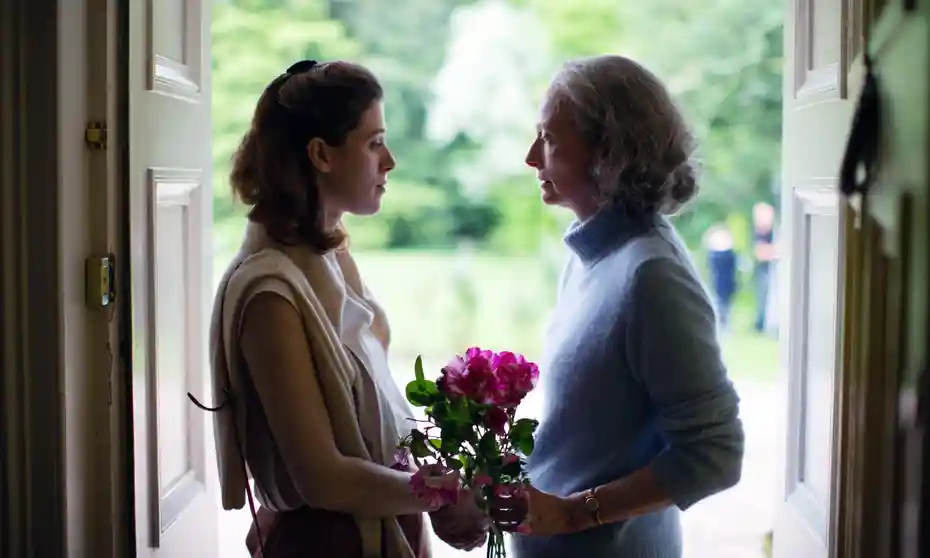
Hogg’s films aren’t without their missteps. One Part I needle drop, Joe Jackson’s “Is She Really Going Out With Him,” seems to provide commentary as obvious as anything in Trier’s dialogue or voiceover. For all the attention to the historical detail and emotional substance of Hogg’s real-life experience, her unscripted conversations also occasionally feature what sound like anachronisms. One of Harte’s friends and classmates jokes about “haters,” for example, and Anthony coins the term “bed dysmorphia.” Rather than sounding like embarrassing nods to the audience, these bum notes offer a thrilling reminder of the type of film we’re watching: a unique blend of personal documentary and fiction. Hogg, like Harte in Part II, is restaging her past as best she can with the tools and talent she has at her disposal. Inaccuracies are in keeping with the imperfection of memory, the impossibility of turning back time, and the idea that even world-class directors are still making and learning from mistakes. Among The Worst Person in the World’s primary themes is the notion that one has plenty of time for making imperfect choices and that erring is often instructive. By making illustrative use of her own personal and artistic setbacks, Hogg creates a far more moving rumination on similar themes.
Spreading two minutes of observation and insight over two hours, The Worst Person in the World ultimately matches television for unjustified duration and the imagined profundity of its open-ended conclusion. Maybe that lack of resolution is the point. After all, there’s no reason Julie’s life or anyone’s life needs to come fully into focus by their early 30s. It’s a pleasant message, one that’s proven unsurprisingly resonant among viewers reconsidering their places in a changed world. Julie’s consequence-free career shifts and unflappable forward momentum have made her an object of envy as much as fascination and affection. Critics must have particular cause to idealize someone who can pick an artistic profession based on little more than passion and pay the rent stress-free. Trier seems animated more by passion than talent, too. His bittersweet conclusion rings hollow in both its melancholy and happy notes. Aksel confirms to Julie that she’s far from The Worst Person in the World, and is, in fact, “a damn good person” shortly before passing away off screen. It’s a marked contrast to Hogg’s rigorous lack of sentimentality and the lack of closure that defines Harte’s time with Anthony. Later, Julie encounters Eivind from afar. Wrapping up after a shoot (remember her photography studies?), Julie watches as he walks off with the actress she just photographed. This pair of series finale clichés leads to an almost comically non-descript ending. Julie sits at her desk, reviewing the snapshots from her latest shoot. She’s come into her own, finally feels comfortable in her skin as a person and as a professional. At least that seems to be the implication. It’s a simulation of a happy ending to cap off a simulation of a good movie.
Only by virtue of their very existence do The Souvenir films have happy endings. We have to believe we’ve watched the evolution of a great director (or two) to consider them happy endings at all. Part I concludes with Harte, newly returned to school and working on a short starring one of her friends. She and her classmates are set up to film a monologue, with a dolly track leading up to a seated Elisa (Alice McMillan). As Elisa begins her monologue, the camera pans right to focus on the crew, who slowly begin to walk toward her in rhythm with the dolly. Harte remains static, her classmates pass in front of her as the camera begins a slow zoom. Once she’s isolated in the frame, Harte waits a beat before turning to face the camera. Time seems to stop as Harte completes the shift from uncertain supporting player to confident lead. The film’s final shot finds Harte standing before a massive open doorway, an exciting world spread out before Hogg and her. Though Hogg repeats herself somewhat in Part II’s conclusion — returning to the same location, panning the camera, breaking the fourth wall — the effect is much different. If Part I’s final frame is anticipatory, Part II’s is emphatic. Hogg emerges as one of the world’s greatest filmmakers.
Stay up to date with all things Split Tooth Media and follow Bennett on Letterboxd
(Split Tooth may earn a commission from purchases made through affiliate links on our site.)
- His is the lone “mixed” review on Metacritic, the site categorizes every other review as “positive.”
- Brody is surprisingly off the mark in his review of Part II, writing, “The movie is without irony, humor, ideas, a sense of anything going on in the world near or far” and calls the above scene an example of “unintended comedy.”

